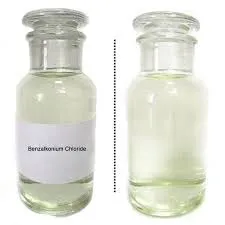cationic polyacrylamide flocculant
Cationic Polyacrylamide Flocculant A Versatile Solution for Water Treatment
Cationic polyacrylamide (CPAM) flocculants have gained considerable attention in recent years due to their effectiveness in various water treatment processes. These synthetic polymers are widely utilized in diverse fields such as wastewater treatment, mining, paper manufacturing, and agriculture. Their unique properties, including high molecular weight and positive charge, make them particularly beneficial for enhancing the settling and removal of suspended particles in water.
Understanding Cationic Polyacrylamide
Cationic polyacrylamide is a water-soluble polymer produced by the polymerization of acrylamide and cationic monomers. The introduction of cationic groups imparts a positive charge to the polymer, enabling it to interact strongly with negatively charged particles in water, such as clay, silt, and organic matter. This interaction facilitates the agglomeration of particles, forming larger flocs that can be easily removed from the water through sedimentation or filtration.
One of the primary advantages of CPAM flocculants is their ability to function effectively in a wide range of pH levels and conditions. Unlike traditional inorganic coagulants, which may have limited effectiveness under certain circumstances, cationic polyacrylamides maintain performance across various environments. This adaptability makes them valuable for industries where water chemistry can be unpredictable.
Applications of Cationic Polyacrylamide
1. Wastewater Treatment CPAM is extensively used in municipal and industrial wastewater treatments. Its ability to enhance the separation of solids from liquids is particularly useful in clarifying effluents. By promoting floc formation, cationic polyacrylamide improves the efficiency of sedimentation tanks and reduces the need for additional chemical treatments.
2. Mining and Mineral Processing In the mining industry, CPAM is employed to improve the recovery of valuable minerals by enhancing the settling of tailings. The application of cationic flocculants helps in reducing the volume of waste slurry, decreasing environmental impact, and optimizing resource recovery.
3. Paper Manufacturing The paper industry benefits from cationic polyacrylamide as it aids in the retention of fines and fillers during the papermaking process. This retention improves the quality of the final product while decreasing the amount of raw materials needed, thus saving costs and resources.
cationic polyacrylamide flocculant

4. Agricultural Applications Cationic polyacrylamides are also used in agriculture, particularly in soil conditioning and erosion control. They improve soil structure and moisture retention, which can lead to enhanced crop yields. Additionally, they assist in reducing runoff and sedimentation in water bodies caused by agricultural practices.
Advantages of Cationic Polyacrylamide
The use of cationic polyacrylamide flocculants provides several benefits
- High Efficiency CPAM flocculants are highly effective in reducing turbidity and improving clarity in water. Their ability to work at lower dosages compared to traditional flocculants makes them a cost-effective solution.
- Environmentally Friendly These polymers are biodegradable and have a lower environmental impact than many synthetic chemicals used in water treatment. Their use can align with sustainable practices in various industries.
- Versatility The application range of cationic polyacrylamide is broad. Its adaptability to different conditions and variables makes it suitable for a diverse array of processes.
- Reduced Sludge Production The flocculation process aided by CPAM results in the formation of denser flocs, which can lead to lower sludge volumes in wastewater treatment systems.
Conclusion
Cationic polyacrylamide flocculants represent a pivotal advancement in water treatment technologies. Their multifunctional uses across different industries underscore their importance in promoting efficient water management and resource recovery. As the demand for clean water continues to rise, the role of CPAM in sustainable water treatment processes will undoubtedly grow, offering reliable solutions to some of the pressing environmental challenges we face today. The continued research and development of cationic flocculants will likely yield even more innovative applications, further enhancing their relevance in a rapidly changing world.
-
lk-319-special-scale-and-corrosion-inhibitor-for-steel-plants-advanced-solutions-for-industrial-water-systemsNewsAug.22,2025
-
flocculant-water-treatment-essential-chemical-solutions-for-purification-processesNewsAug.22,2025
-
isothiazolinones-versatile-microbial-control-agents-for-industrial-and-consumer-applicationsNewsAug.22,2025
-
scale-inhibitor-key-solutions-for-water-system-scale-preventionNewsAug.22,2025
-
organophosphonates-versatile-scale-inhibitors-for-industrial-water-systemsNewsAug.22,2025
-
scale-and-corrosion-inhibitor-essential-chemical-solutions-for-water-system-maintenanceNewsAug.22,2025





